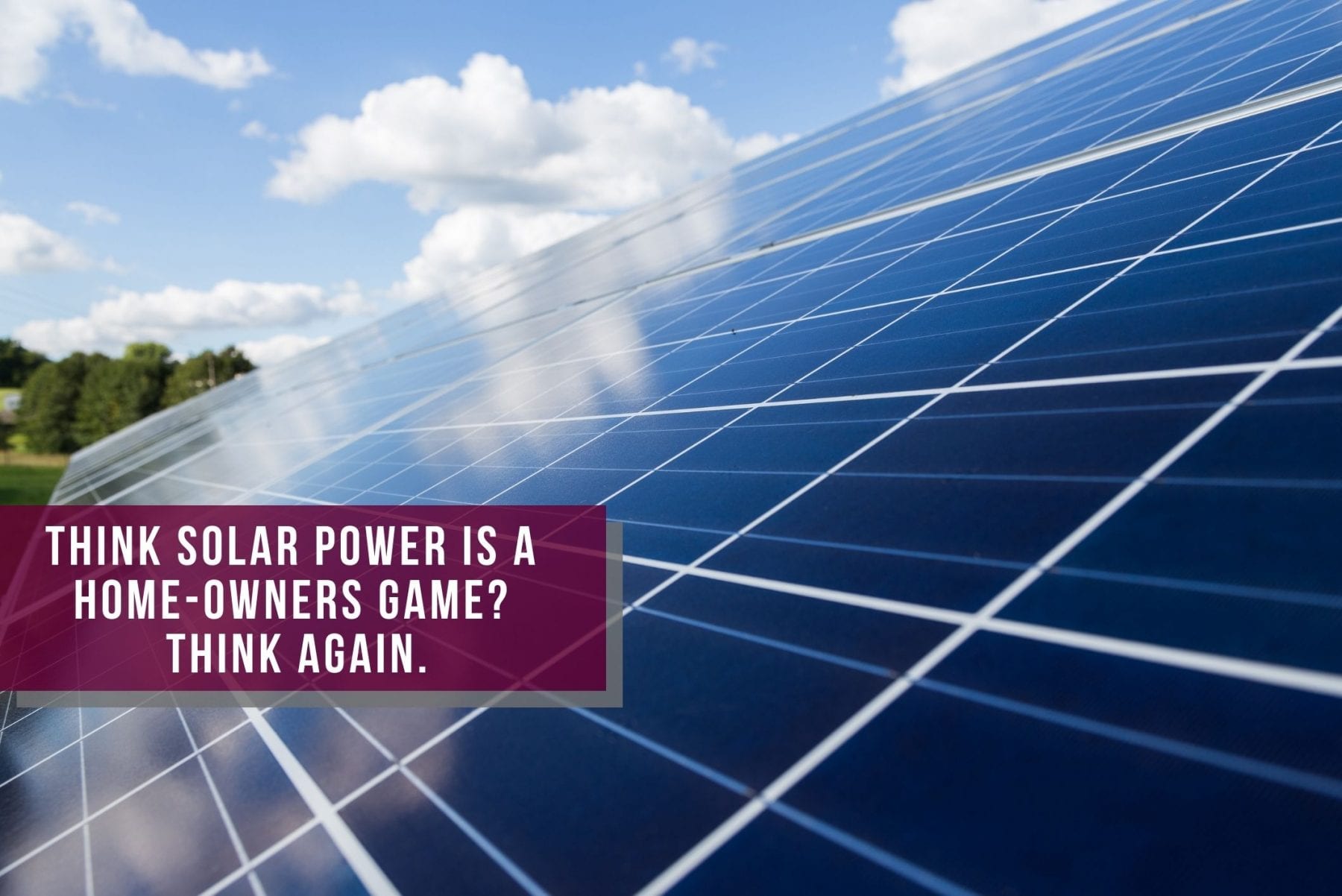
Dealings with Defects: A 2021 Update
March 30, 2021
Gone without a trace: the holes in strata community contact tracing
April 21, 2021
Dealings with Defects: A 2021 Update
March 30, 2021
Gone without a trace: the holes in strata community contact tracing
April 21, 2021
Think solar power is a home-owners game? Think again.
New laws are opening the door to millions of Australians seeing their strata community go solar. New South Wales has taken steps to make it drastically easier for the state’s apartment-dwellers to share the benefits of rooftop solar and electric vehicles, after legislating changes to the state’s strata title laws.
The NSW Minister for Better Regulation Kevin Anderson, said last week that newly passed amendments to the NSW Strata Schemes Management Act would mean that strata committees seeking to install technologies like rooftop solar could do so with the consent of just half (50%– or more – of the owners.
This change mirrors that which was brought into Western Australia in 2019, marking a significant moment for those eager to take up sustainable initiatives.
It now seems a case of not if, but when strata communities will adopt solar friendly practices – but until then, we should discuss the ‘why’ and ‘how’. Remembering that ‘what’ may be possible varies with building design and the ‘how’ from state to state. Queensland already having existing laws to enable processes and Victoria following suit in December this year.
Why solar? Why is it a beneficial investment for your community? And how would a community go about fitting solar into their own unique architecture and design?
Why Solar
- Savings on energy – the most efficient solar systems can save you up to around $500 a quarterly bill if you use all of the solar power as it is generated
- Short Payback Period - in most Australian capitals it takes 5 years or less for solar power to pay for itself.
- Increasing property values - Research indicates that the more solar panels there are on the roof, the higher the value of the home – with an estimated increase of almost $6000 dollars per kilowatt of solar energy.
- Reducing carbon emissions – needs no explanation, you’ll be investing in renewable energy!
- Government incentives. – there are several Govt. incentives for property owners and schemes to take the leap and get solar.
How to make solar work for you
Approach 1 - Solar for the common areas
- Install solar in common areas only (outdoor areas, on communal structures)
- Owners benefit from lower communal costs, meaning lower levies
Main advantages:
- Relative simplicity, with one solar system behind just the common area meter
- All owners benefit equally through reduced common costs (usually covered by strata levies)
Main disadvantage:
- No savings on electricity bills for individual occupants
Approach 2 - Each unit gets a separately-metered system
- Instal a bank of solar panels on available roof/common spaces
- Allocate panels to individual owners
- Ensure everyone gets a fair go, (i.e. their panels aren’t getting more or less sun than others for similar investment costs)
Main advantages:
- Provided there is ample viable roof space to go around, each unit has their own solar system, wired up to their own individual meter. This means that there’s no question of whether the benefits of the solar are being shared around in an equitable way, as actual savings will come down to how individuals use energy throughout the day.
- Each unit may have the option to own their solar PV system separately
Main disadvantages:
- Question of how to fairly allocate available roof area between units
- As the individual systems will be small and wired up individually, they may be expensive on a per watt basis compared to solar for stand-alone home, affecting their financial attractiveness
- Mix of renters and owner-occupiers could mean that it’s harder to get sign-off from body corporate; due to varying incentives of owner-occupiers/investors. This is especially important in light of the fact that solar is likely to be less expensive for each individual if a greater number of units go ahead
Approach 3 – Single system with embedded network
- Instal a ‘micro-grid’ within the strata scheme
- Each lot is individually metered and a measurable, completely equitable system is born
- Large scale works required to retro-fit or merge this into existing strata communities
Main advantages:
- Potentially the most equitable way to supply solar energy to units in a block that also helps to deliver the full potential value of solar energy (i.e. ‘free’ solar energy to be consumed during the day, plus solar feed-in credits)
- Depending on the arrangement, a single electricity bill for each unit with appropriate charges & credits
Main disadvantages:
- Could be prohibitively costly to implement – especially if applied as a retrofit solution instead of as part of a brand new development
- A wide range of suppliers and specific approaches could make it difficult or time-consuming for strata committees to decide on the one that best suits their situation and needs, or to get unanimous agreement about the best approach among committee members
- Additional red tape associated with Power of Choice regulations governing the establishment of embedded networks
- Possibly a number of questions to ask and answer about exactly how solar energy will be divvied up among residents
Seeking further advice?
If you wish to discuss any strata community matters further with an Ace Body Corporate Manager, please do not hesitate to visit our contact page and locate your nearest Ace Manager for a chat.
www.acebodycorp.com.au

